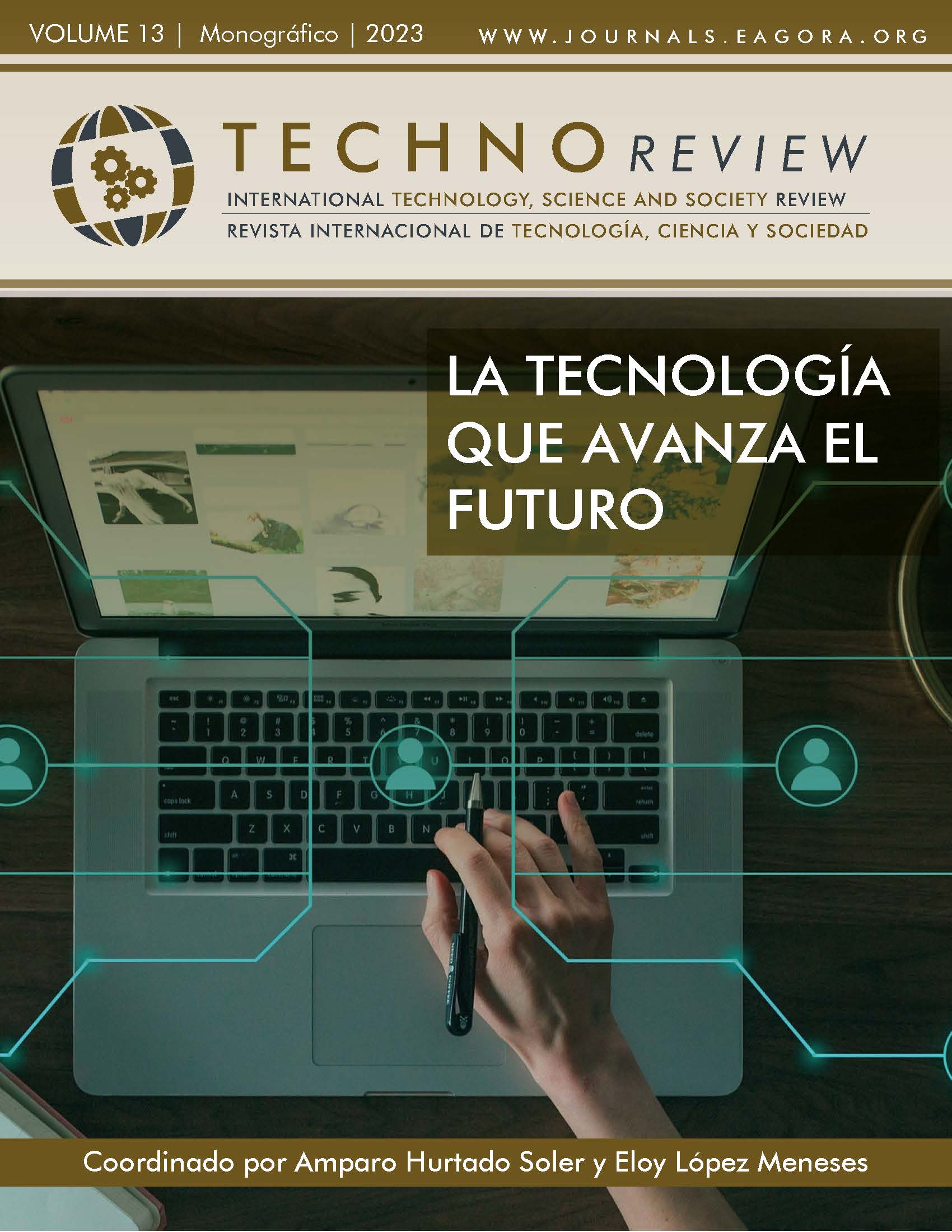Artificial neural network model for the prediction of the "El Niño" phenomenon in the region of Piura (Peru)
DOI:
https://doi.org/10.37467/revtechno.v13.4815Keywords:
Prediction, Phenomenon “El Niño”, Artificial Neural Network, Sea Surface Temperature, Región PiuraAbstract
El Phenomenon El Niño is an event of climatic origin. In 2017 this event will impact the region Piura, Peru. The heavy rainfall generated the overflow of the Piura River that affects the districts of Piura, Castilla, Catacaos and Cura Mori. The objective of the study is to identify the most influential variables and to have a model that predicts the occurrence of the El Niño Phenomenon in the Piura region, through the use of Artificial Neuronal Networks. The results indicate that the Surface Temperature of the Sea is the most influential variable. The model has an accuracy of 82% accuracy.
References
Álvarez Vega, M., Quirós Mora, L. M., & Cortés Badilla, M. V. (2020). Inteligencia artificial y aprendizaje automático en medicina. Revista Medica Sinergia, 5(8), e557. https://doi.org/10.31434/RMS.V5I8.557
Anculle, T., Graco, M., Vásquez, L., García, W., & Gutiérrez, D. (2022). Contribución de las ondas Kelvin a las anomalías térmicas de las aguas costeras frente al Perú durante El Niño 2015 -2016 y el Niño Costero 2017. Boletin Instituto del Mar del Perú, 36(2), 362-384. https://doi.org/10.53554/boletin.v36i2.343
Becerra Correa, N., & Carmona, E. A. (2012). Aprendizaje computacional. Universidad Autónoma de Guerrero Fundación FABBECOR.ONG, 13. http://www.chessbase.com/EvENts/events.asp?pid=155
Charles, Y. P., Lamas, V., & Ntilikina, Y. (2022). Artificial intelligence and treatment algorithms in spine surgery. Revue de Chirurgie Orthopedique et Traumatologique. https://doi.org/10.1016/J.RCOT.2022.06.027
de León, C. L. C. D., Limon, S. V., Gonzalez-Calleros, J. M., & Treviño, M. A. D. V. (2021). Artificial neural network for the extraction of dynamic parameters of robots from incomplete information of their movement. Revista Colombiana de Computacion, 22(2), 37-47. https://doi.org/10.29375/25392115.4298
Díaz Cordero, G. (2012). El Cambio Climático. Ciencia y Sociedad, XXXVII(2), 227-240.
Hijar, G., Bonilla, C., Munayco, C. V., Gutierrez, E. L., & Ramos, W. (2016). Fenómeno el niño y desastres naturales: intervenciones en salud pública para la preparación y respuesta. Revista Peruana de Medicina Experimental y Salud Publica, 33(2), 300-310. https://doi.org/10.17843/RPMESP.2016.332.2205
Huaman, L., & Takahashi, K. (2017). Generación de información y monitoreo del Fenómeno El Niño. Geophysical Research Letters, 43(15), 8230-8239. http://met.igp.gob.pe/publicaciones/Divulgacion_PPR_El_Nino_IGP_201710.pdf
Jiménez-Carrión, M., Gutiérrez-Segura, F., & Celi-Pinzón, J. (2018). Modeling and prediction of el niño in piura using artificial neuronal networks. Informacion Tecnologica, 29(4), 303-318. https://doi.org/10.4067/s0718-07642018000400303
Montealegre, J. E. (2007). Modelo institucional del IDEAM sobre el efecto climático de los fenómenos El Niño y La Niña en Colombia. En Ideam. http://www.ideam.gov.co/documents/21021/440517/Modelo+Institucional+El+Niño+-+La+Niña.pdf/232c8740-c6ee-4a73-a8f7-17e49c5edda0
Neteo. (2022). La gran teoría unificada de la Inteligencia Artificial. https://www.abc.es/ciencia/abci-gran-teoria-unificada-inteligencia-artificial-201004060300-124677973843_noticia.html?ref=https%3A%2F%2Fwww.google.com%2F
Pacheco, H., Montilla, A., Méndez, W., Hipatia-Delgado, M., Zambrano, D., Pacheco, H., Montilla, A., Méndez, W., Hipatia-Delgado, M., & Zambrano, D. (2019). Causas y consecuencias de las lluvias extraordinarias de 2017 en la costa ecuatoriana: el caso de la provincia Manabí. Boletín de Investigaciones Marinas y Costeras - INVEMAR, 48(2), 45-70. https://doi.org/10.25268/BIMC.INVEMAR.2019.48.2.766
Perdigón-Llanes, R., & González-Benítez, N. (2022). Artificial neural networks in bovine milk production forecasting. Revista Colombiana de Computacion, 23(1), 20-33. https://doi.org/10.29375/25392115.4209
Ramírez, I. J., & Briones, F. (2017). Understanding the El Niño Costero of 2017: The Definition Problem and Challenges of Climate Forecasting and Disaster Responses. International Journal of Disaster Risk Science, 8(4), 489-492. https://doi.org/10.1007/s13753-017-0151-8
Takahashi, K. (2016). Modelado teórico-matemático de El Niño extraordinario. Boletín Técnico, 3, 2016. https://doi.org/10.1029/2011GL04736
Downloads
Published
How to Cite
Issue
Section
License
Those authors who publish in this journal accept the following terms:
- Authors will keep the moral right of the work and they will transfer the commercial rights.
- After 1 year from publication, the work shall thereafter be open access online on our website, but will retain copyright.
- In the event that the authors wish to assign an Creative Commons (CC) license, they may request it by writing to publishing@eagora.org







